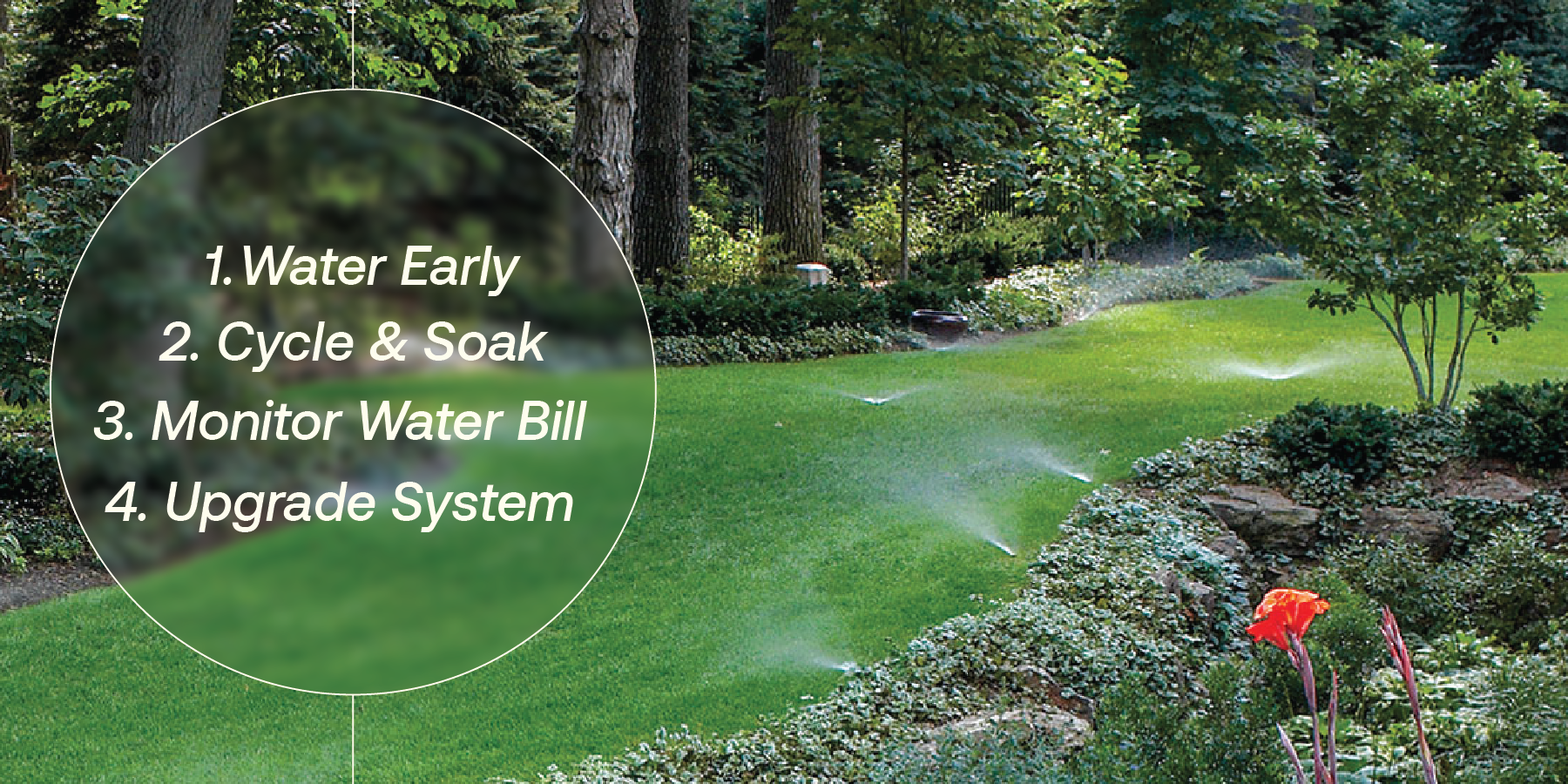Quenching the Thirst of Your Landscape: Four Easy Ways to Conserve Water

Water is essential for maintaining your landscapes. It serves as a source of plant sustenance and a crucial tool in soil management and microclimate regulation. However, the importance of water conservation cannot be overstated. A lush, healthy landscape might be pleasing to the eyes, but the gallons of water consumed to keep it thriving can be a concern, particularly in regions grappling with water scarcity.
Inefficient watering methods and systems account for significant water waste. This article explores the importance of water conservation in landscape maintenance and provides four simple yet practical measures you can implement to make your landscapes more water efficient. Let's dive into this vital topic and explore how we can quench the thirst of our landscapes more responsibly.
1. Water Early
Watering early in the morning brings many benefits. First, it minimizes evaporation, ensuring the maximum water reaches the plant roots. Cooler morning temperatures reduce the rate at which water evaporates, allowing the water to seep deep into the soil and making it accessible to plant roots throughout the day. This process helps effectively quench the thirst of your landscape and encourages deeper root growth, leading to stronger, healthier plants. Another benefit is that it reduces the growth of fungi, molds, and other diseases that thrive in wet conditions. Allowing plants to dry under the sun after morning watering creates an unfavorable environment for these pathogens to grow. Hence, watering in the morning not only conserves water but also promotes plant health and resilience.
2. Use the "Cycle and Soak" Method
The "Cycle and Soak" method is another effective strategy to conserve water on your landscape. This method involves dividing watering sessions into shorter periods to give the soil time to absorb the water, thereby preventing wasteful runoff. For instance, instead of watering your plants for 30 minutes at a stretch, you might irrigate for three 10-minute sessions with intervals in between. This systematic approach allows water to seep deeper into the soil, promoting healthier root growth and reducing water waste. This approach also minimizes the risk of water pooling on the surface, which can lead to root disease and attract pests. Some modern irrigation systems like Rain Bird Smart Controllers, have "Cycle and Soak" scheduling features, easing the process of this efficient watering method. The "Cycle and Soak" method ensures plants receive enough water without wasting valuable resources.
3. Monitor Your Water Bill and Check for Leaks in Your Irrigation System
A sudden increase in your water bill may be an indication that there is an issue with your irrigation system. By regularly monitoring your water bill, you can be proactive about detecting any potential problems. Aside from this, it is good practice to conduct routine checks on your irrigation system for leaks or malfunctions. Even a tiny leak can waste as much as 6,300 gallons of water per month - enough to fill a large swimming pool. Walk through your landscape regularly and look for signs of leaks such as puddles of water, unusually soggy areas, or sections of your landscape that are greener than others. If your irrigation system is automated, check your controller to make sure it is functioning correctly. You can also install a Flume Water Monitor for outdoor and indoor water measurement and leak detection. If you notice any problems, fix them immediately to prevent further water waste. If necessary, hire a professional irrigation contractor to help you find and repair leaks. By taking these simple steps, you can ensure that your irrigation system is running efficiently and not contributing to unnecessary water waste.
4. Upgrade Your System to More Efficient Equipment
Upgrading your irrigation system to more efficient technology is an excellent way to conserve water. Modern irrigation systems have features designed to minimize water waste, increase efficiency, and save money. Some communities offer rebates that can offset the cost of these upgrades. These irrigation equipment upgrades can make your existing irrigation system more efficient:
Weather-based controllers
Smart irrigation controllers such as the Rain Bird ARC Series App-Based Residential Controller, can automatically adjust watering schedules based on weather conditions. By reducing water usage during rainy or cooler periods, a smart controller can save an average home nearly 7,600 gallons of water each year. In addition to these upgrades, rain sensors and soil moisture sensors can further enhance the efficiency of your irrigation system. These devices can prevent unnecessary watering by detecting rainfall or soil moisture levels and adjusting irrigation accordingly.
Rotary Nozzles for Sprays
Consider replacing conventional spray sprinklers with rotary sprinklers, which distribute water more slowly and evenly, reducing run-off and allowing the soil to absorb more water. Retrofitting existing spray bodies with rotary nozzles can result in significant water savings, potentially up to 30%, when compared to standard spray nozzles.
Drip Irrigation and Root Watering Systems
Drip irrigation systems are another water-efficient alternative, especially for planter beds and trees. These systems deliver water directly to the plant's root zone, minimizing evaporation and runoff.
Pressure Regulating Systems (PRS)
A Pressure Regulating System (PRS) manages the water pressure in your irrigation system resulting in significant water savings. By maintaining consistent pressure within the sprinkler system, PRS can help ensure that the water is dispersed evenly across your landscape, maximizing the effectiveness of your irrigation. California has mandated all new sprays sold in the state have PRS technology because of its proven efficiency.
Conscientious water management in landscape maintenance significantly impacts our environment and your savings. Implementing strategies such as the "Cycle and Soak" method, routinely checking for leaks, and upgrading to more efficient irrigation systems can reduce water consumption substantially. Innovations such as weather-based controllers, rotary nozzles, drip irrigation systems, and PRS can optimize water usage, ensuring each drop counts. Remember, every effort contributes to “The Intelligent Use of Water” which helps maintain our planet's sustainable future.
